
Publisher:
Bonnie King
CONTACT:
Newsroom@Salem-news.com
Advertising:
Adsales@Salem-news.com

~Truth~
~Justice~
~Peace~
TJP
May-07-2009 07:28

 TweetFollow @OregonNews
TweetFollow @OregonNews
Navy Sealed El Toro Wells Without Thorough Inspection
Robert O'Dowd Salem-News.comA special in-depth report on the status of the heavily contaminated and now closed base, which was once the premier Marine Corps Air Station.
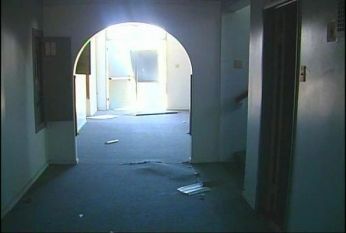 A ghostly view inside of an abandoned building at the old El Toro Marine Corps Air Station. Images of El Toro during the summer of 2008. By Tim King Salem-News.com |
(IRVINE, Calif.) - El Toro's base wells were sealed by the Navy without inspection for well screen intervals after one screen was found in the contaminated aquifer. An international epidemiologist and radiation expert recommends the Navy do blood tests on Marines for radiation exposure in one hangar on the former base.
The Navy failed to inspect base wells for location of well screens before sealing them, ignoring evidence that a former MCAS El Toro’s base well was contaminated with trichloroethylene (TCE), a known carcinogen.
Contamination from Radium 226 once used as a fluorescent paint on aircraft instruments and gauges at El Toro was found in one hangar. Groundwater near several base landfills had elevated levels of radiation.
The Navy, responsible for El Toro cleanup, has not disclosed the failure to inspect all base wells for the well screen interval before their destruction nor made public report on radiation at the former base.
The Navy has released at least three “fact sheets” on El Toro as part of the effort to inform the public. Nothing was said about faulty well destruction process or the radiological studies on the base.
We obtained a copy of the Radiological Report on two huge maintenance hangars under the Freedom of Information Act (FOIA). A area of one hangar where the radium paint room was located was found contaminated with radium.
The report is almost seven years old. The California Department of Public Health has not approved the hangar for unrestricted use, citing concerns over the Navy’s radiological survey.
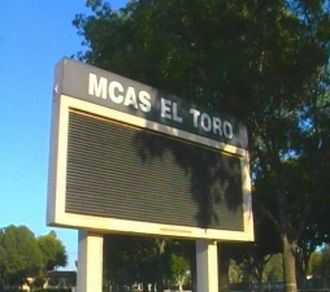
MCAS El Toro was once the premier Marine Corps Air Station. After trichloroethylene (TCE) was discovered off base in 1985, El Toro was placed on the EPA Superfund list and eventually closed in July 1999. The Navy sealed the base wells from 1998 to 2006. Thousands of men and woman served at El Toro over 56 years. The human cost from exposure to carcinogens like TCE and Radium 226 is incalculable.
No veteran, dependent or civilian worker at El Toro was informed of the health effects of their possible exposure to toxic chemicals and Radium 226.
This is not unusual since there is no regulatory requirement to notify veterans and others at any military base on the EPA Superfund list of what EPA calls the “Chemicals of Concern.”
TCE was used as a degreaser on aircraft at El Toro for decades before safe environmental practices were implemented. The Navy traced the source of the TCE to the highly industrialized southwest quadrant of the base, the home of the Marine Wing Service Group-37. The clean-up continues today and will not be completed for years.
For the Navy, the hundred of millions spend on El Toro remediation and the transfer of the former base to local authority is a success story.
The Navy sold much of the former base to a joint venture headed by Lennar Corporation in 2005 for $650 million. For those who served at El Toro or worked as civilians on the base and now are seriously ill, the story is anything but a success.
TCE and Radiation
In 1985 the Orange County Water District discovered TCE near El Toro. The source of the toxic chemical was traced to the base, resulting in its placement on the EPA Superfund list.
El Toro kept no TCE usage records. The Navy estimated 8,000 pounds of TCE in the soil and groundwater under the base. The city of Irvine consultants estimated the amount at 700,000 pounds.
There is no disagreement that the TCE plume cut its path right through the base wells.
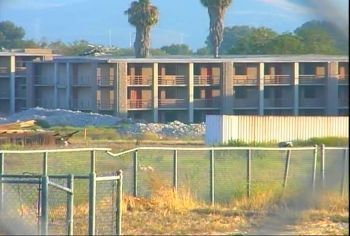
A Navy groundwater monitoring report from 2000 estimated that the TCE in the groundwater in the immediate area of the base wells ranged from 50 ug/L to 500 ug/L or from 10 to 100 times the EPA Maximum Contaminant Level (MCL).
In fact, Navy and EPA reports show that the shallow groundwater unit (SGU) is contaminated with TCE and other Volatile Organic Compounds (VOCs) like tetrachloroethylene (PCE).
Both the Navy and EPA insist that the base wells were safe from contamination.
The Navy reported that an impenetrable clay barrier from 70 to 140 feet thick named the Intermediate Zone stopped the toxic chemicals from contaminating the base wells.
In fact, our review of Navy well destruction reports obtained from the Orange County Health Agency showed that inspection by a Navy contractor on the first well selected for destruction in 1998 the found well screen at 210 feet below the ground surface or about 50 feet above the clay barrier in the SGU. TCE was found in this well. The report was never made public by the Navy.
The remaining base wells were destroyed without inspecting them for the location of the well screen intervals.
Navy Gets Facts Wrong
In August 2008, the Navy published an attractive, slick blue and gold colored fact sheet on the internet describing the groundwater cleanup activities at former Marine Corps Air Station (MCAS) El Toro. See: www.bracpmo.navy.mil.
The purpose of the fact sheet was “to provide the community with an update of groundwater cleanup activities” for Site 18 (the Principal Aquifer or PA) and Site 24 (the Shallow Groundwater Unit or SGU).
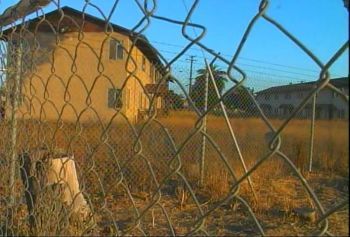
The information on the SGU was apparently intended for veterans and their dependents and civilian workers who lived and worked on the base prior to its closure and had concerns about the base wells.
The Navy reported that six base Navy wells were constructed during WW II at total depths from 440 to 645 feet below the ground surface; the combined flow from these six wells was 900 gallons/minute in August 1945; and the depths and pumping rates were consistent with the current and historic supply and irrigation wells in the greater Irvine Sub basin.
All of this is reassuring information to the Marines, dependents and civilian workers—the consumers of water from the base wells. However, the information was just not accurate.
We found that the Navy production reports showed only four of the six wells were ever in production at any one time and the combined maximum output of these was 41,071,400 gallons in August 1949, not August 1945 as reported.
Navy Well #3 was a dry hole while Navy Well #4 was in production for only five months during this period.
Contrary to the Navy report, not all of the wells were constructed by the Navy in WW II. We found that Navy Well #1 was originally Irvine Company Well #57. As of May 1943, Well #57 had become Navy Well #1.
More important to the community of veterans, dependents and workers, the Navy failed to disclose the location of the well screens, only the depths of the wells.
To the uninformed reader, the depth of the wells provided protection since the contaminated SGU was separated from the principal aquifer by 70 to 140 feet thick layer of impenetrable clay.
The Navy failed to mention that the original construction drawings with the well screen locations were lost or that the well screen interval and not the depth of the wells determined the first point that water and contaminants entered the well.
A review of the well destruction reports on file at the Orange County Health Agency in Santa Ana showed that the Navy inspected only one well prior to sealing them and never looked for another well screen after the consultant reported the well screen interval started in the contaminated SGU.
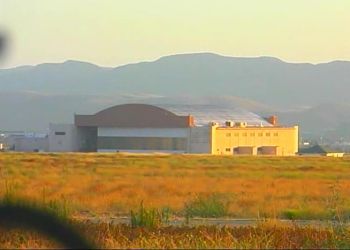
In March 1998, the Navy contracted with OHM Services Corporation, Irvine to scrub the well casing, locate the well screen and video tape the well casing on Navy Well #4. OHM reported that the well screen was a series of vertical slots hand cut by torch from 210 feet to 494 feet below the ground surface (bgs).
Since the shallow groundwater unit went to 260 feet below the ground surface, about 50 feet of the screen was in the contaminated SGU. OHM reported chemical analysis of the well taken in August 1995 by another contractor found 12 ug/L of TCE. The EPA Maximum Contaminant Level for TCE is 5 ug/L.
Instead of inspecting the other wells before their destruction, the Navy ignored the findings from Navy Well #4 and sealed the wells without knowing the location of the well screen intervals.
The TCE plume spreading into Orange County cut a path right through the base wells. The TCE plume put the wells at risk for contamination.
The Intermediate Zone of clay provided an effective barrier to contamination only if the well screens were not located in the contaminated SGU.
The Navy’s decision not to inspect other wells for the well screen intervals before sealing them is unconscionable. Marines and others on the base drank and showered in this water.
If the other well screens were in the SGU like Navy Well #4, then the base water supply was at risk for contamination with toxic chemicals.
Municipal Water
The Navy fact sheet reported the purchase of municipal water from the Metropolitan Water District in February 1951, which was succeeded by the Irvine Ranch Water District in July 1969.
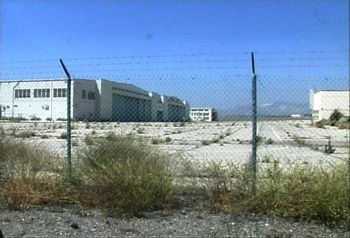
Did El Toro abandon the base wells as early as February 1951? The Navy reported there were no pumping records for the wells after December 1950.
However, we found evidence that the base wells were in use long after the MWD contract.
Despite no reports of water shortages in the aquifer under the base, the Navy reported the construction of an 18-inch water supply pipeline in the 1950s, followed by the award of municipal water services contracts with the Metropolitan Water District in February 1951 and with the Irvine Ranch Water District in July 1969.
FOIA requests were made to the Navy for copies of the supporting documentation for both contracts. Supporting documents may have been destroyed and are no longer available.
The possibility that the Navy may have abandoned the base wells in 1951 by purchasing municipal water defies common sense.
It doesn’t make sense for the Navy to abandon productive wells that were less than 10-years old.
Based on our review of El Toro engineering drawings, it’s clear that the base wells were abandoned on or before 1986. We were unable to find any information on the actual dates the base wells were abandoned. The Navy could only confirm that well pumping records abruptly stopped as of December 1950.
We did find that Navy's 4 wells were good producers and with Well #4 back in service, they had 5 of the 6 wells available for water for the entire base.
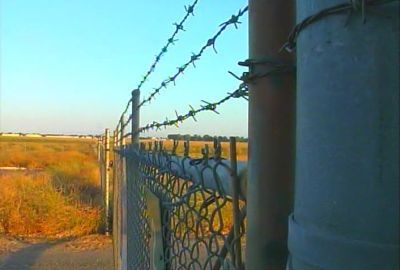
There were no tests for TCE in 1950 so this was not a factor in the decision to purchase municipal water.
It takes quite an imagination to believe that the Navy woke up one day and simply decided to purchase municipal water from the Metropolitan Water District. Water is not an inexpensive commodity in Southern California.
Navy procurement regulation for negotiated contracts with MWD and IRWD required technical justification to support purchase. The problem is the supporting documentation is with the official government contract files now apparently destroyed.
Total Dissolved Solids ("Salts")
Evidence supports that the levels of total dissolved solids (“salts”) from the SGU caused service disruptions to the base wells and may have been behind the decision for the Navy to construct the 18-inch pipeline and purchase municipal water.
The Navy production records showed service disruptions in Navy Wells #4, #5, and #6. We also found an early El Toro Public Works Department engineering drawing from 1948 “Repairs to Wells and Pumping Equipment.”
Based on information from the Navy obtained by FOIA, the MWD contract provided for the delivery of one cubic foot/second of “softened water” for El Toro and the nearby Santa Ana Air Facility.
To most of us that’s a lot of water, but based on our calculations not enough to support the water needs of El Toro and the nearby Santa Ana Air Facility.
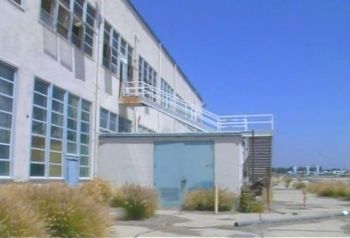
The United States Geological Survey defines cubic foot per second (cfs) as "the flow rate or discharge equal to one cubic foot of water per second or about 7.5 gallons per second." Converting the one cubic foot per second into gallons equals about 648,000 gallons/day for both installations (7.5 x 60 x 60 x 24).
Even if all of the water went to El Toro and none to the Air Facility, the supply of water from MWD was only 50% of the maximum output of 4 Navy wells (900 gal/minute x 60 minutes x 24 hours or 1,296,000 gallons/day).
Based on these facts, it’s obvious that the MWD municipal water contract was not intended to replace the base wells but, more likely than not, intended to supplement the “hardened water” well water with softened water, helping to extent the useful life of the wells and pumps.
It’s obvious the intent of the Navy fact sheet is to dismiss the base wells as an issue as early as February 1951.
You would have to believe in the tooth fairy to be convinced that the Navy and Marine Corps walked away from Navy wells that early without good cause.
The Navy never stated the base wells were abandoned in 1951, but their Fact Sheet strongly suggest it. However, in this instance, the data just doesn’t support this conclusion.
What about the follow-on municipal water services contract with the Irvine Ranch Water District? We obtained a copy of the July 1969 contract from IRWD.
This contract estimated daily demand of 1,730,000 gallons/day for El Toro. However, the government was not obligated to purchase this quantity. This daily estimated daily demand in 1969 exceeded the maximum daily output from the 4 Navy wells (1,296,000 gallons/day).
When Where the Navy Wells Abandoned?
TCE tests in drinking water were not available until the 1980s. However, the Navy’s Bureau of Medicine and Surgery Instruction 6240.3C, dated August 25, 1972, set a standard for chlorinated hydrocarbons at 3 to 100 ppb in 1972. The Bureau of Medicine and Surgery required that any drinking water exceeding the chlorinated hydrocarbon standard be rejected.
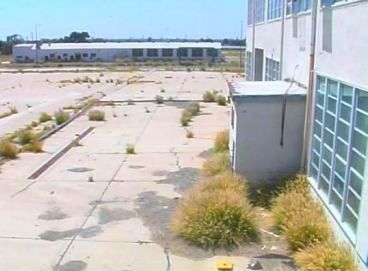
Chlorinated hydrocarbons are a group of chemicals composed of carbon, chlorine and hydrogen. TCE is a chlorinated hydrocarbon. As early August 1972, the Navy had the means to test for chlorinated hydrocarbons in the drinking water.
There are no laboratory analysis reports available for El Toro’s base wells so unless someone with inside information comes forward, it’s impossible to confirm whether any chlorinated hydrocarbons were found in El Toro base wells.
Since TCE was found in Navy Well #4 in 1995, it’s possible as early as 1972, the Navy and Marine Corps may have been aware that this well if not abandoned by then and possibly others exceeded the Navy’s drinking water standard for chlorinated hydrocarbons.
Ordinarily, you would expect the Navy and Marine Corps to continue to use the base wells until the water was found to be contaminated or the mounting repair costs and service disruptions forced the abandonment of the wells.
The fact sheet does not address any of these issues nor does it provide any explanation of the missing El Toro water distribution engineering drawings. These drawings would provide evidence of the use of the base wells.
Using FOIA, we requested copies of El Toro’s water distribution drawings. We found a kind of “Bermuda Triangle” between 1954 and 1986. Between these 32 years, there are no engineering drawings on El Toro’s water distribution system. A 1954 engineering drawing clearly showed 5 Navy wells as part of the water distribution system (including Navy Well #4). By 1986, all of the Navy wells are gone and only the Irvine Company Well #55 remains (this well was on the property as early as 1942).
Our conclusion is that between 1954 and 1986, the Navy and Marine Corps abandoned the Navy wells at El Toro. It’s possible that someone who worked in the El Toro’s Public Works Department knows the actual dates, but so far, no one has volunteered any information.
There’s no spin anyone can put on the decision not to locate all well screen intervals. Given that the TCE plume cut a path through the base wells and the known toxicity of ingestion of TCE contaminated water, the decision not to inspect all wells for the screen interval prior to sealing them is at best irresponsible and at worst a deliberate cover-up.
Radium Contamination Reported
As part of the base closure process, the Navy contracted with Roy F. Weston, Inc. to perform a Historical Radiological Assessment (HRA) of El Toro. A copy of Weston’s May 2000 HRA was obtained via FOIA from the Navy.
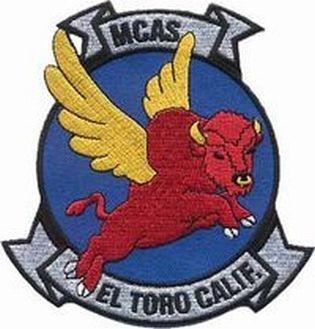
Aircraft containing radioactive equipment and safety devices had been stationed and worked on at El Toro. Based on interviews, review of documents, and informal surveys, Weston recommended radiological surveys of a number of sites on El Toro for further investigation.
Among these sites were the Original Landfill, the Perimeter Road Landfill, Magazine Road Landfill, Communication Station Landfill, and several hangars, including Hangar 296, the site of a Radium Paint Room.
Radium 226 and 228 were found in the groundwater in the landfills while areas in the north mezzanine of Hangar 296 were reported contaminated with Radium 226.
In Hangar 296, Weston found elevated radioactive levels within the “former radium room, paint room, and ventilation ducting over the north mezzanine.” Portions of the concrete floor title, ventilation ducting and sewage piping were found contaminated, removed and deposited off-station. The Navy reported the area fully remediated and ready for release for unrestricted use.
In July 2002, Weston prepared “Final Radiological Release Report for Hangars 296 and 297.” The Navy forwarded the report to the California Environmental Protection Agency’s Department of Toxic Substances Control recommending that that these two hangars be released for unrestricted use.
Hangar 297 was released for unrestricted use, but Hangar 296 was not. Follow-up with CDPH showed that CDPH had “concerns” over the radiological survey in Hangar 296. No additional details were available from the state.
Based on the Navy’s Weston report of Hangar 296 and state unexplained concerns over the radiological survey, it appears the Marines who worked in the north mezzanine of the hangar are at risk for exposure to radiation.
Blood Test for Radiation Exposure
Information from Dr. Rosalie Bertell, Ph.D, an international renowned epidemiologist and acknowledged expert in radiation, indicated that the Navy could perform a blood test to determine whether anyone at El Toro was exposed to radiation.
Dr. Bertell in an April 14th email stated that: “The Navy could perform a chromosome breakage test. Radiation exposure causes a second break of the DNA before the first has time to be repaired, producing signature Rings and Dicentrics. This is usually visible for years after exposure. It requires only a blood sample, and they have good estimates of normal occurrence of these types of breaks due to background radiation. It would not take much effort to undertake this type of testing, and it could be easily analyzed at Oakridge. Probably you should have split samples and send one sample to a non-government agency to be sure. The Cytogenetics Laboratory at Roswell Park Cancer Research center in Buffalo NY would be able to do it. There might also be a center near to where you live. If you have already had radiation therapy for the cancer, this would falsify the test.”
“The military has been careless with toxic and radioactive materials. I think it is part of the mind set which allows them to handle these things!”
A petition to the Navy Public Health Center to evaluate the risk of occupational exposure to radiation and toxic chemicals at El Toro, including a chromosome breakage blood test for those interested is on the interest. (See: http://www.gopetition.com/petitions/cdr-melissa-mohon-usn.html)
Human Impact
The following personal accounts are anecdotal but demand evaluation and investigation by appropriate authority. These comments are from Marine veterans, dependents, and civilian workers who were stationed or worked at former MCAS El Toro.
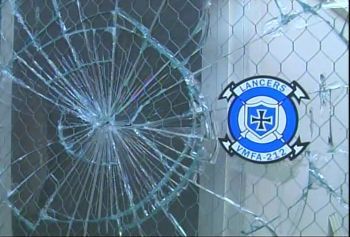
One MWSG-37 Marine recalls using an overhead crane to hoist 55 gallon drums of TCE, which were then, emptied into a large vat in one of MWSG-37’s huge maintenance hangars. The tank was heated and a metal basket with parts to be cleaned was lowered into the vat. Very effective. Within seconds the parts were cleaned. You can guess where the waste ended up.”
Another Marine in the same group reported that he “saw a lot of TCE ‘up close-and-personal’ as the aircraft strip was done just below us [Bldg. 296]. At the TCE ‘hose-down’ stage, clouds of the stuff would waft on the wind—get into the upper level [of the hangar]. As I recall, a single F9F could use up to a 1/3rd of a 55 gallon drum. Excess TCE simply drained into a sump outside the hangar door. If you were entering or exiting the hangar while this segment was underway, you had to stand back and not let the stuff get on your uniform of the day. If you got spritized—goodbye your clothing—would eat away the cloth like a moth…a lot of Marines are either dead or dying (family members included). You can see this by reading the Marine Air Transport Association quarterly newspapers going back to 2000. The ‘obits’ would leave one to believe that dozens of these Marines—spanning literally decades of service—have died from conditions that fairly scream out ‘CLUSTER CANCER’ with TCE fingerprints.”
Susan, wife of an El Toro Marine, wrote that: “When my Marine husband developed brain cancer, his neurosurgeon asked if he had ever been exposed to toxic chemicals. He was stationed at El Toro and Camp Lejeune [both TCE contaminated bases] in the 1960s but we knew nothing of the TCE/PCE exposure. My husband died March 24, 2008.”
Susan’s note really caught my attention. I had a seizure before a prostate operation in July 1987. On follow-up, a neurologist asked if I had ever been exposed to chemicals. I had not and asked him why the question. He replied that my symptoms were typical of someone who had been exposed to chemicals. In 2005, I survived stage 2/3 bladder cancer, which is linked to exposure to TCE and possibly Radium 226 at El Toro. I worked and slept on duty watch in Hangar 296, right above the former Radium Paint Room.
Elmer, an El Toro Marine, wrote: “I have Crohn’s disease and have had it for about 40 years. I spent two years at El Toro.”
Richard, another El Toro Marine, wrote: “I served at El Toro in 1965. I now have multiple physical and other problems. I am on disability and always thought I was too young to have the problems I have.”
This one caught my eye. So far we have been unable to track down Lorraine and her brother in California. Both were at El Toro the same time as me. I didn’t know personally. Lorraine wrote: “My brother and I were stationed at El Toro between 1964 and 1967. We both have many physical problems. My brother developed cancer of the throat two years ago and was actually dead for 45 seconds. I have COPD and need a breathing device to sleep at night.”
A retired Marine Corps Gunnery Sergeant wrote: “You say that these chemicals were only used until the mid 1970's but I know for a fact that they were used up until the early 1990's. How do I know because we used them OFTEN. As you said they were a degreaser and an outstanding one at that. They were also used for hydraulic contamination testing and keeping hydraulic components and equipment clean. When I was with VMA (AW)-121 and MALS-11 we would use the stuff daily (1-5 gallons). I think the hangers that you are referring to are the KC-130 hangers on the west end of the base. I do know of a Marine that spent most of his career in that hanger and died of cancer soon after retiring (months), the VA/USMC claimed not military related. We took up a big collection in the squadron/KC-130 community to help his family pay for medical bills.”
This note from a mother set off alarm bells: “I am adding my daughter Sarah Ann to the list as she developed ALL (Acute Lymphocytic Leukemia) in 1991 at the age of 12 while living in base housing at El Toro Marine base and attending school at the El Toro Marine School.” At Camp Lejeune, the government confirmed the death of 16 children from exposure to TCE in contaminated base wells.
What’s Next for the El Toro Story?
Government spin should never be a substitute for the truth. We live in an imperfect world. Mistakes are made. People get injured.
It’s apparent to me from the almost total lack of concern over the impact of exposure and the health effects to the community of Marines, their dependents, and civilian workers that action needs to be taken by the Navy Marine Corps Public Health Center to evaluate the risk of exposure to VOCs and radiation and to offer the chromosome breakage blood test to confirm exposure to radiation.
At this point, the jury is out: Will the Navy do the right thing? Only time will tell.
Follow this link to all of our stories about the Marine Corps and TCE
 Bob O’Dowd is a former U.S. Marine with thirty years of experience on the east coast as an auditor, accountant, and financial manager with the Federal government. Half of that time was spent with the Defense Logistics Agency in Philadelphia. Originally from Pennsylvania, he enlisted in the Marine Corps at age 19, served in the 1st, 3rd, and 4th Marine Aircraft Wings in 52 months of active duty in the 1960s. A graduate of Temple University, Bob has been married to Grace for 31 years. He is the father of two adult children and the grandfather of two boys. Bob has a blog site on former MCAS El Toro at mwsg37.com. This subject is where Bob intersected with Salem-News.com. Bob served in the exact same Marine Aviation Squadron that Salem-News founder Tim King served in, twenty years earlier. With their combined on-site knowledge and research ability, Bob and Tim and a handful of other ex-Marines, have put the contamination of MCAS El Toro on the map. The base is highly contaminated with TCE, trichloroethelyne
Bob O’Dowd is a former U.S. Marine with thirty years of experience on the east coast as an auditor, accountant, and financial manager with the Federal government. Half of that time was spent with the Defense Logistics Agency in Philadelphia. Originally from Pennsylvania, he enlisted in the Marine Corps at age 19, served in the 1st, 3rd, and 4th Marine Aircraft Wings in 52 months of active duty in the 1960s. A graduate of Temple University, Bob has been married to Grace for 31 years. He is the father of two adult children and the grandfather of two boys. Bob has a blog site on former MCAS El Toro at mwsg37.com. This subject is where Bob intersected with Salem-News.com. Bob served in the exact same Marine Aviation Squadron that Salem-News founder Tim King served in, twenty years earlier. With their combined on-site knowledge and research ability, Bob and Tim and a handful of other ex-Marines, have put the contamination of MCAS El Toro on the map. The base is highly contaminated with TCE, trichloroethelyne
Articles for May 6, 2009 | Articles for May 7, 2009 | Articles for May 8, 2009
Quick Links
DINING
Willamette UniversityGoudy Commons Cafe
Dine on the Queen
Willamette Queen Sternwheeler
MUST SEE SALEM
Oregon Capitol ToursCapitol History Gateway
Willamette River Ride
Willamette Queen Sternwheeler
Historic Home Tours:
Deepwood Museum
The Bush House
Gaiety Hollow Garden
AUCTIONS - APPRAISALS
Auction Masters & AppraisalsCONSTRUCTION SERVICES
Roofing and ContractingSheridan, Ore.
ONLINE SHOPPING
Special Occasion DressesAdvertise with Salem-News
Contact:AdSales@Salem-News.com



googlec507860f6901db00.html

Terms of Service | Privacy Policy
All comments and messages are approved by people and self promotional links or unacceptable comments are denied.
Carole Autrey March 24, 2011 12:18 pm (Pacific time)
Senior Care Associates has consulted with thousands of families of Veterans and their surviving spouses on how to qualify for the Aid and Attendance pension. You need to be 65, in need of care, either living at home, assisted living or a nursing home. This tax free pension is worth from $1,056-$1,949 a month and is directly deposited into your bank account. Call us for a free consultation to see if you qualify. 877-424-1333, http://www.seniorcareassociates.com
Rhonda Orr November 20, 2009 12:44 pm (Pacific time)
I was stationed in MCAS El Toro and MCAS Tustin from 1982 - 1984. I lived in the barracks, in base housing on both bases. I worked all over both bases. I was assigned to MAG-16, MABS-16 and delivered message communications as well as radio equipment. I also was required to go on LZ Control Teams and work in all hangers. I was exposed to Radium, TCE, PCE and various toxic chemicals consistant with the EPA reports. I have battled Stage 3 Breast Cancer for the past 5 years. I have unexplained seizures to the point that my body shuts down and nobody can explain. I was pregnant with my daughter and gave birth to her during this time. Her newborn child died without explanation. SIDS? I would like my daughter and myself compensated for our tragedies and our lives. Nobody can put money on those issues but would like her taken care of the remainder of her life mostly.
[Return to Top]©2025 Salem-News.com. All opinions expressed in this article are those of the author and do not necessarily reflect those of Salem-News.com.